Kanji for “all,” “whole,” “entire,” “complete”: 全
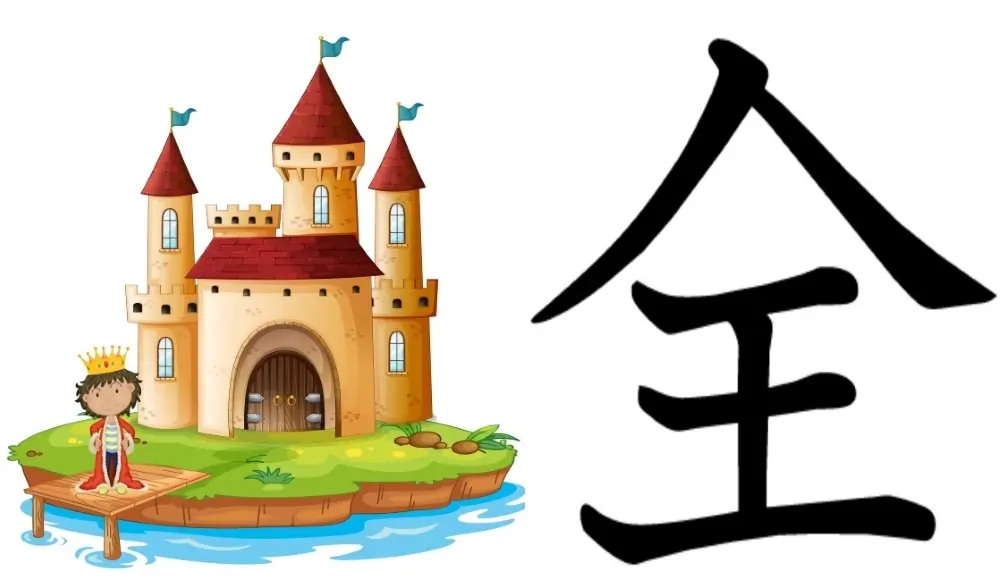
The Japanese Kanji 全 means “all,” “whole,” “entire,” or “complete.”
The Kanji 全 is used in the following contexts:
- All, Entire, Whole: Refers to the complete part or entirety of something.
- Complete: Implies that nothing is missing; fully constituted.
- Total: Often used to describe a sum or aggregate amount.
The kun’yomi (Japanese reading) pronunciations of the Kanji 全 are “matta-ku” (まった-く) and “sube-te” (すべ-て), and the on’yomi (Chinese reading) pronunciation of 全 is “zen“ (ゼン).
The Kanji 全 commonly appears in Japanese names and is used in 457 names. However, in names, it is pronounced as “tāke” (たけ) or “masa” (まさ).
The Kanji 全 is constructed with 6 strokes. It is part of the JLPT N3 syllabus (please check the list of JLPT N3 Kanji), and it is taught in grade 3 in Japanese schools.
Origin of the Shape 全
The following illustration shows the ancient shapes of the kanji 全 and how we write it today:
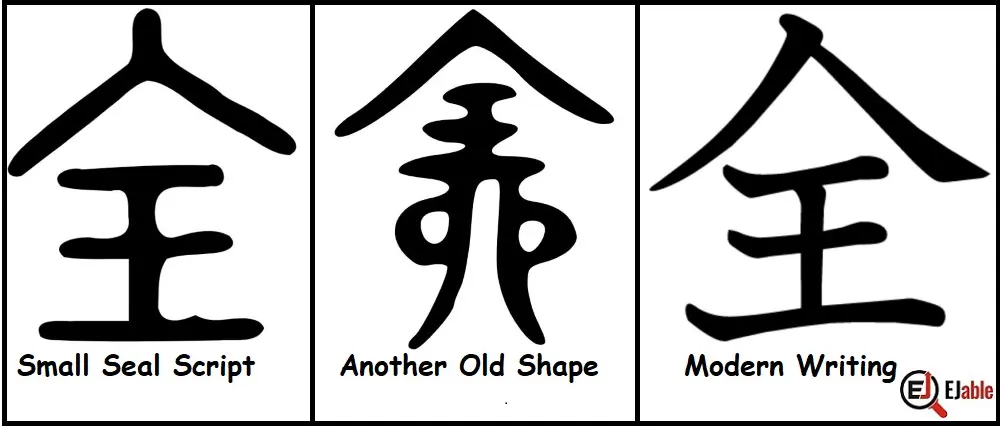

Please note that though there were many other variations of the construction of this Kanji in ancient times, the current shape remains quite similar to that of the small seal script.
Components and Construction of the Kanji 全 (All)
The Kanji 全, which in essence means “all” or “whole“, is constructed with two components 𠆢 and 王:
Radical 𠆢
The component 𠆢 is called “hitoyane” (人屋根) and is composed of Kanji characters meaning person and roof. In the Kanji 全, this component may denote a person collecting everything under a roof or a cover.
In other words, the roof denotes inclusivity or encompassment, which are essential to denote wholeness or completeness and to mean “all.”
Component 王
王 is the Kanji for King. However, in some traditional Chinese dictionaries, the Kanji 王 and the Kanji for Jade or Jewel 玉 are treated as the same radical to denote preciousness.
For ready reference, please use the following mnemonic of King’s axe (power) for the Kanji 王:
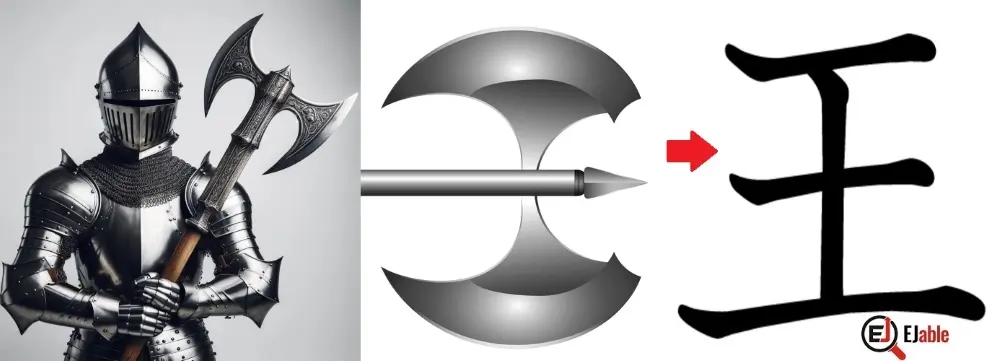

There are different interpretations for having 王 in the Kanji 全. These interpretations vary from adding strength to the concept of collecting or gathering the things under a cover to reach wholeness or entirety to considering 王 not as the king but as jewels. This interpretation of having preciousness under the roof brings the concept of wholeness into the picture.
Mnemonic to Remember the Kanji 全’s Meaning as “All” or “Whole”
The above-mentioned logic behind the shape of 全 makes it easy to remember this Kanji to mean completeness and entirety.
However, the following illustrations can make good pictorial mnemonics to relate the shape 全 with its meaning of “all” or “whole”:
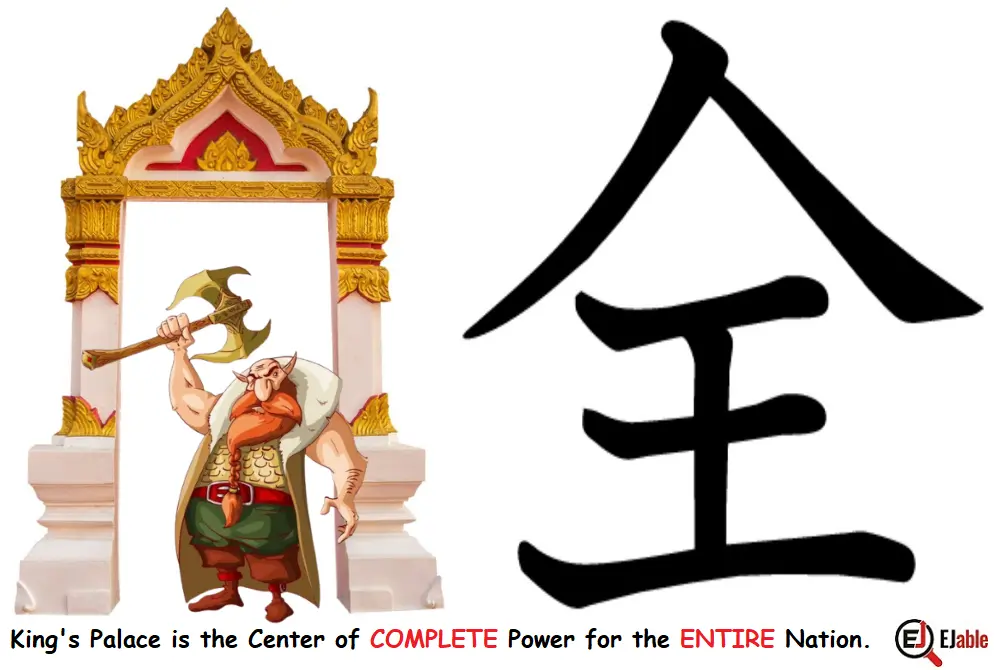

Explanation
Think of the roof over the king as the palace. The palace of the king is the place with “complete” power over the “entire” nation. This mnemonic will make this Kanji very easy to remember for its meaning.
Stroke Order for the Kanji 全
The following illustrations show the order of the 6 strokes to write the Kanji 全:
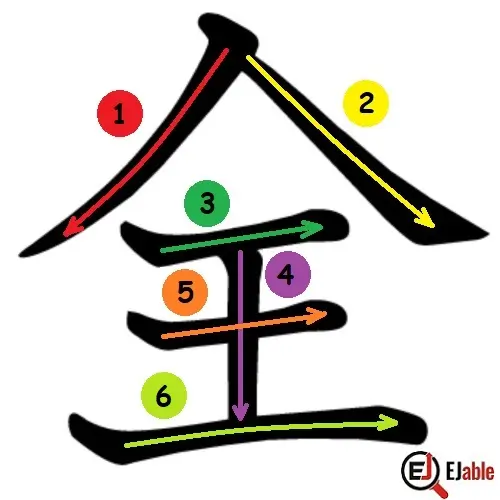

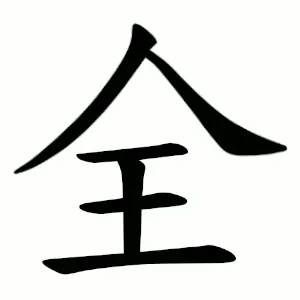

全 as a Component in other Kanji Characters
The Kanji 全 is used as a component in 12 Kanji characters, out of which the following 2 are Jōyō (commonly used) Kanji:
- 詮 (せん / sen): Search, Inquire into (an act of asking for information).
- Explanation: 詮 combines 言 (meaning “word” or “speech”) with 全 (zen, meaning “whole” or “complete”). This Kanji is used in contexts related to asking for information, often implying the analysis or interpretation necessary to make a concept fully understood. It reflects the idea of getting to the ‘whole’ or ‘entirety’ of meanings through words.
- 栓 (せん / sen): Plug, cork, stopper.
- Explanation: 栓 consists of 木 (meaning “tree” or “wood”) and 全 (zen, meaning “whole” or “complete”). The usage of 全 in this Kanji metaphorically adds the notion of something that makes an entity complete by closing or securing it. 栓 typically refers to a device used to block or seal an opening, often made from wood, acting as a closure that ensures completeness.
Both of these Kanji utilize the concept of “completeness” or “entirety” derived from 全 to underpin their respective meanings—whether it’s reaching a full understanding or securing something in a complete manner.
全 Kanji in Compounded Words
There are 341 Japanese words that begin with the Kanji for “All,” “Whole,” or “Complete” (全), and it appears in 550 words overall.
Examples of Kanji 全 in Compounded Japanese Words
- 全国 (ぜんこく / zenkoku): Nationwide; pertaining to the entire country.
- 全部 (ぜんぶ / zenbu): All, everything; referring to the whole amount or entirety.
- 全力 (ぜんりょく / zenryoku): Full power; using all one’s strength or effort.
- 全員 (ぜんいん / zen’in): All members; everyone involved.
- 全体 (ぜんたい / zentai): The whole; the entire thing or entity.
- 全然 (ぜんぜん / zenzen): Completely, totally (often used in negative sentences in modern colloquial Japanese).
- 全面 (ぜんめん / zenmen): Entire surface; the whole area or aspect.
- 全額 (ぜんがく / zengaku): The entire amount; the total sum of money.
- 全開 (ぜんかい / zenkai): Fully open; completely open.
- 全集 (ぜんしゅう / zenshū): Complete works; the entire collection of a writer’s or artist’s works.
- 全裸 (ぜんら / zenra): Completely nude; without any clothes.
- 全速力 (ぜんそくりょく / zensokuryoku): Full speed; as fast as possible.
- 全盛期 (ぜんせいき / zenseiki): Golden age; the peak or prime period.
- 全般 (ぜんぱん / zenpan): General, overall; pertaining to all aspects or the entirety.
- 全消し (ぜんけし / zenkeshi): Complete erasure; erasing everything.
- 全知全能 (ぜんちぜんのう / zenchi zen’nō) – Omniscient and omnipotent; knowing everything and having all power.
- 全自動 (ぜんじどう / zenjidō): Fully automatic; operating entirely by itself.
- 全席 (ぜんせき / zenseki): All seats; every seat available.
- 全文 (ぜんぶん / zenbun): Full text; the entire text of a document.
- 全休 (ぜんきゅう / zenkyū): Taking the whole day off; a full day’s leave.
These examples demonstrate how 全 is used to convey the concept of completeness, totality, or entirety in a variety of everyday expressions and specialized terms encompassing the concept of “all”.
Note: Check other Kanji characters on the page “How to Learn Kanji“.


A long-term ex-pat in Japan, Himanshu comes with an IT background in SAP consulting, IT Business Development, and then running the country operations of an IT consulting multinational. Himanshu is the co-founder and Managing Director of ReachExt K.K. and EJable.com. He is also an Advisory Board Member of a Silicon Valley AI/IoT startup.

